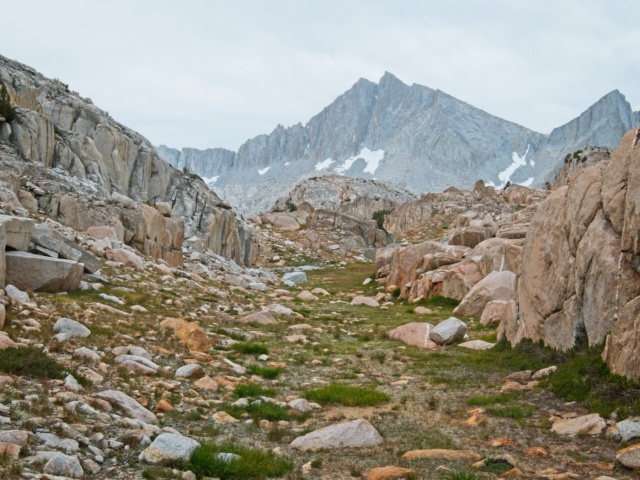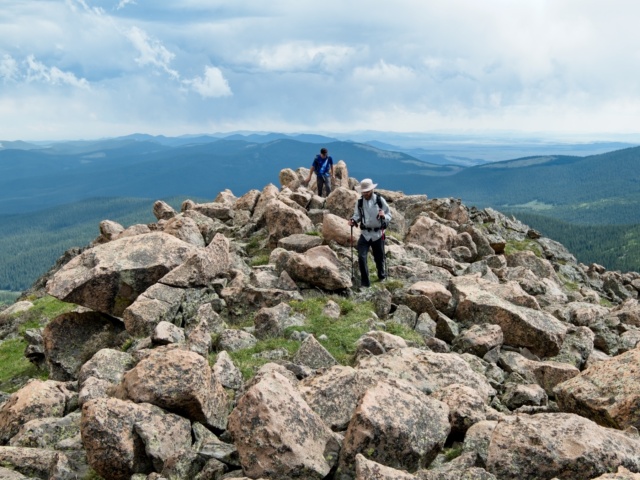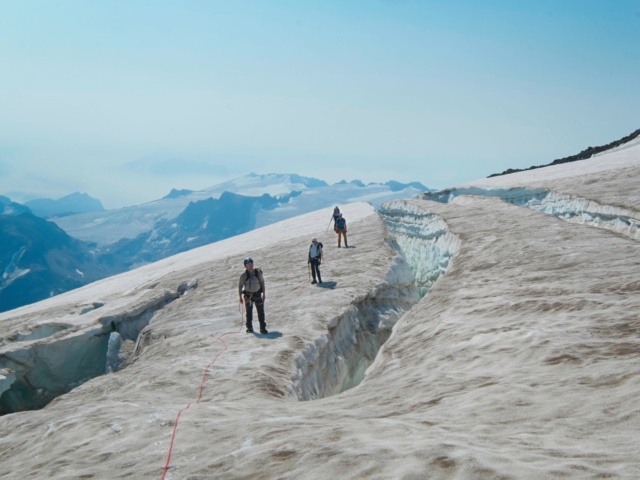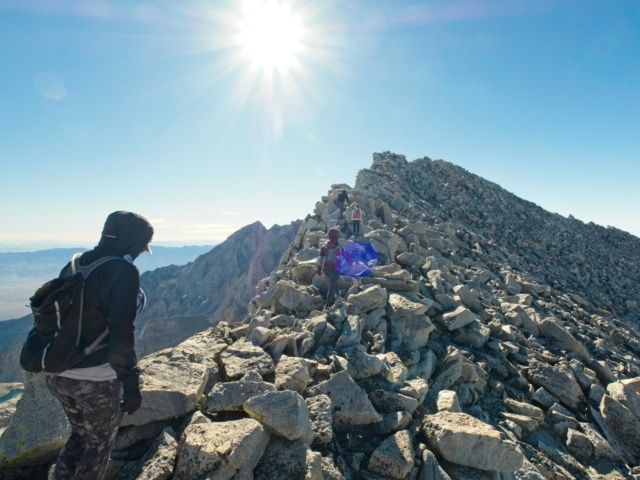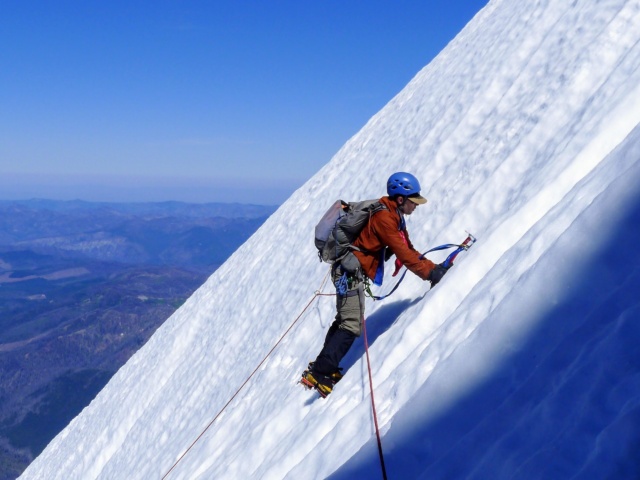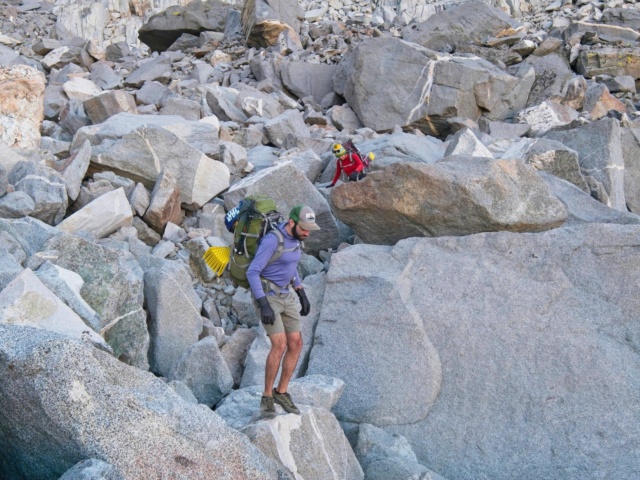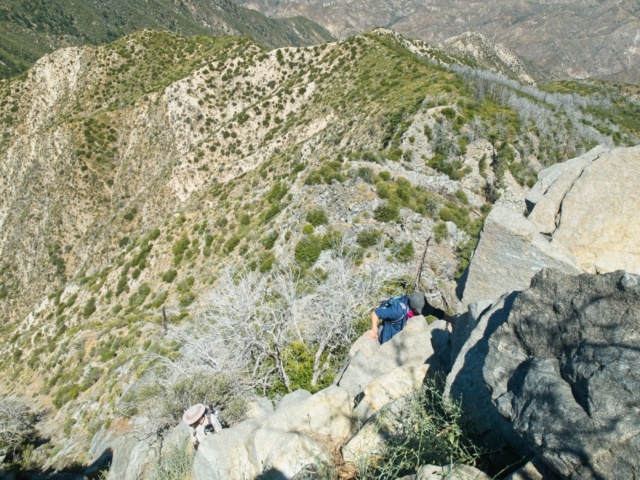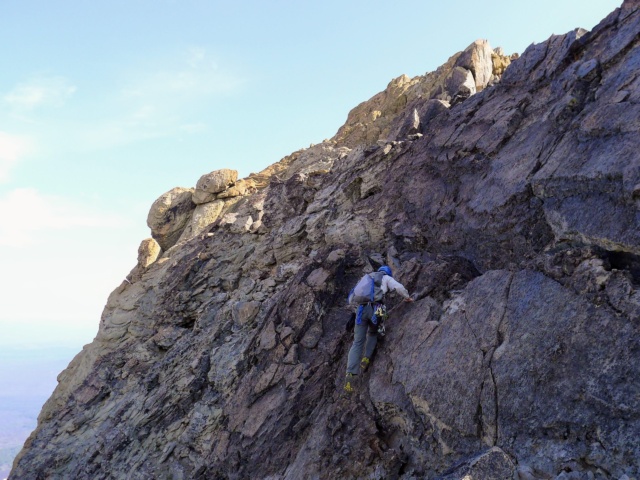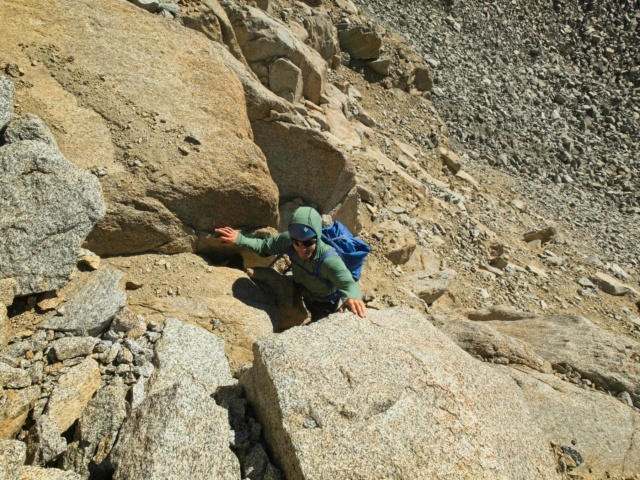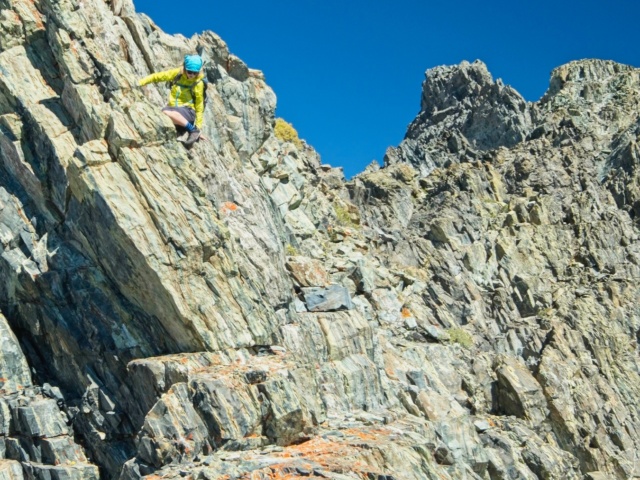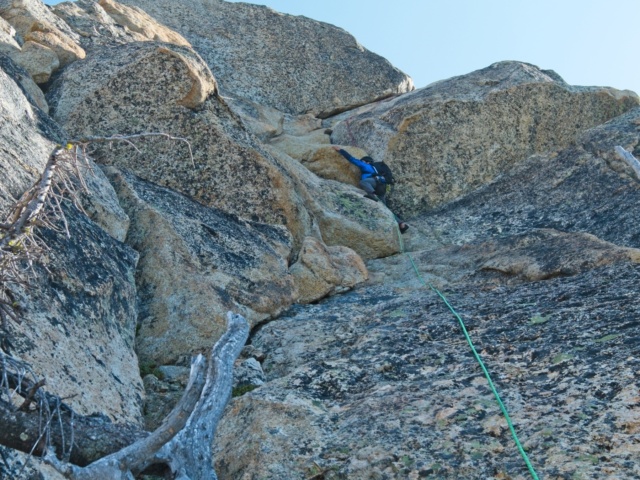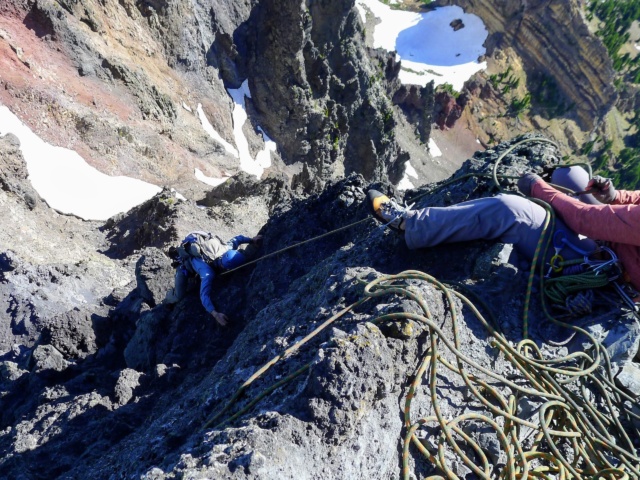One of the metrics included in the trip planning information is the “difficulty”, ranging from class 1 to class 5. What do these numbers mean? The short answer is that they’re part of the Yosemite Decimal System (YDS). These ratings do not describe the amount of effort required; class 1 can be long and strenuous and class 5 can be quick and easy. Rather, the YDS describes the technical difficulty of the most difficult part (i.e., the crux) of a climb. Also note that exposure, or the distance you could fall, is not part of the difficulty rating: you can walk a class 1 route along the Grand Canyon with thousands of feet of exposure or climb a class 5 face with a few feet of exposure.
Class 1 – Walk in the Park
Class 1 terrain is low-risk and doesn’t require much gear beyond footwear. That doesn’t mean the way can’t be steep and difficult (from a cardiovascular perspective)! Most trails fall into this category. Technical glacier travel is often categorized as class 1 terrain despite the need for protective gear like ropes and harnesses due to the low to moderate slopes encountered.
Class 2 – Hands for Balance
Moving up into class 2 terrain usually means talus, scree, or steep snow. You’ll likely need to use your hands to maintain balance and pay attention to your foot placement. Like class 1, technical gear is not generally required to traverse class 2 terrain.
Class 3 – Scrambling
Class 3 terrain requires you to use your hands to move upwards and a rope may be used for extra safety when exposure (the distance you will fall) is high. Colloquially called “scrambling,” this kind of climbing uses both handholds and footholds but there are plenty of physical features for both. Third class terrain is not usually entirely vertical and can often be down-climbed by facing outward (back to to the wall). If you’re a Lord of the Rings fan, the winding stair to the pass of Cirith Ungol is a class 3 climb.
Class 4 – Difficult Scrambling
Fourth class terrain is more vertical with less abundant features than class 3 terrain – something between scrambling and easy rock climbing. A rope can be used to protect against falls but is not strictly required; you might be comfortable climbing a short face without any gear but rope up at an exposed spot. Down-climbing this terrain is usually done facing inward (face to the wall).
Class 5 – Technical Rock Climbing
Class 5 terrain is what most of us just call “rock climbing.” The obstacles are vertical or even overhung cliffs; ropes, harnesses, and all manner of other climbing gadgets are employed to protect against falls. This category is further subdivided, ranging from 5.0 at the easiest to 5.15d at the hardest. At the low end of the 5.x range, hand and footholds are plentiful, large, and easy to find. As the grade increases, the holds become smaller, less frequent, and more… interesting.

